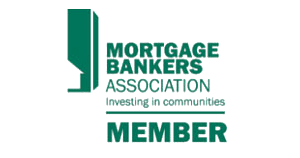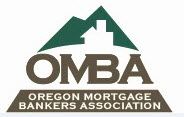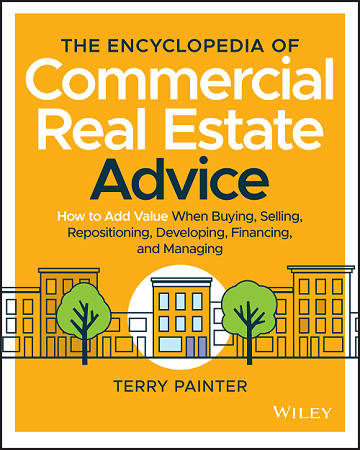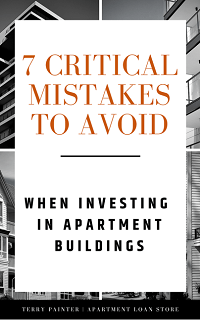CAP Rates For Apartment/Multifamily Properties in Miami, Florida
Multifamily Apartment Cap Rates
Rates as of: 12/04/2022| Description | Cap Rate |
|---|---|
| Luxury Metro A Class | 4.27 |
| Luxury Metro B Class | 4.41 |
| Luxury Metro C Class | 4.93 |
| Suburban A Class | 4.72 |
| Suburban B Class | 4.68 |
| Suburban C Class | 5.21 |
| Value Added Acquisition | 5.81 |
Multifamily Apartment Cap Rates
Where are Multifamily Apartment Cap Rates Headed
By Terry Painter/Mortgage Banker
Author of: "The Encyclopedia of Commercial Real Estate Advice"
Member of the Forbes Real Estate Council
UPDATED 9/7/2022
I have worked as a commercial mortgage banker for the past 25 years and have encountered many surprises. But nothing that equals the call I got last week from a client that was making an offer on a 36-unit, C Class property in Greenville, South Carolina. "Are you seriously going to buy this property at a 3.76 cap?", I asked him.
The seller had owned the property for 16 years and had hardly raised rents in this blue-collar neighborhood during that time. But really? A 3.76 cap? Earlier this year I closed a multifamily loan on a B class property in Santa Monica, California at a 3.25 cap which made perfect sense in that neck of the woods.
Have cap rates on multifamily properties gone completely nuts? How is it that a C class property in a working-class neighborhood in South Carolina can be offered at close to the same cap rate as a B class property in one of the most moneyed areas of California? And why was my client willing to pay such a high price for a property that did not have the net operating income to support it? Stay tuned. I will get to that in a moment.
Why Cap Rate Compression today is almost Scandalous
Historically, cap rate compression (the lowering of cap rates) occurs naturally because of rents going up over time creating more net operating income and higher property values.This is often accelerated by a process called forced appreciation when rents are pushed up by cleaver investors that implement value adds. But what’s happening now is an anomaly due to the four factors in play below. What seems almost scandalous are the high number of sellers that haven’t bothered to upgrade their properties or increase rents that are being rewarded with insanely high sales prices for doing absolutely nothing but being at the right place at the right time.
4 Reasons Cap Rates on Apartment Buildings Have Been Compressing
1. Low Interest Rates – Cap rates have been coming down on apartment buildings pushing values up at a rapid rate since the recovery phase of the great recession in 2010, and even more so during the corona virus recession of 2020. During both recessions the Feds purchased an unprecedented amount of treasury and mortgage-backed security bonds that kept long term interest rates artificially low. These record low rates supported a much higher loan amount which made it feasible for buyers to get financing at a much higher sales price.
2. Supply and Demand – Just as in the housing market, the corona virus created a record low inventory of multifamily properties for sale as buyers and sellers insulated themselves from each other. Once it was safer for people to mingle again, many sellers were reluctant to put their properties on the market, thinking prices would go up even higher.
3. Low Construction Starts – in March of 2020, the corona virus pandemic scared most lenders from making construction loans on projects already in the works. About 6 months later these lenders were eager to lend again. But by then, the supply chain calamity increased the cost of materials and labor making it economically prohibitive to build. Fortunately, the cost of materials is coming down now, but labor is still at an all-time high. To add insult to injury the feds raised prime rate (which most construction loans are based) 2.25% between March and July 2022. This lowered loan amounts and increased construction cost.
4. Record High Rents and Low Vacancies – With the cost of homes skyrocketing, more Gen Z first time home buyers were sidelined into the rental market, pushing rents up by over 10% in 2021 and over 15% annually through June of 22 according to Redfin. According to Moody Analytics, multifamily vacancies hit a 20 year low of 4% in the second quarter of 2022.
So, now getting back to why my client was so eager to overpay for the property mentioned earlier. He’s actually a smart guy who owns an apartment building down the street that is full with a waiting list. The property he wants to buy is in good condition with under market rents. All he has to do is raise the rents 60% to market rate and he will hit a home run.
Will Multifamily Prices be Coming Down Soon?
It seems evident that multifamily sales prices have reached their peak. Sales for multifamily properties started dropping in May 2022 due to increased interest rates according to the National Multifamily Housing Council. Another telling factor is that multifamily starts (5 Units +) increased by 18% year to date through June in 2022 according to the National Association of Home Builders and will add 300,000 new units to the market in 2022 according to CBRE.
With historically high inflation, rising interest rates, and the gross domestic product (GDP) being down for two consecutive quarters, a recession could be looming around the corner. If this happens will prices come down? Not likely. Unlike the great recession where vacancies and delinquency on rent payments dangerously increased due to high unemployment, the opposite is the case now. And most sellers today have savings plus good incomes and can afford to wait to get the prices they want. With or without a recession, it’s more likely prices will flatten for quite a long time, with demand for units remaining high. And with the stock market being a roller coaster ride, more investors will view the high prices of multifamily real estate as a safe haven.
5 Reasons Why Multifamily Apartment Cap Rates are so Low
In 2008 when the Great Recession hit, multifamily property values went down or remained flat. The recession was caused by a 6 year bull market where commercial real estate prices kept going up reaching unrealistically high prices that were not supported by reality. The real estate market was also in the hyper-supply phase (see more about this below), which usually means you are buying at the top of the market. Today we are at a similar place, with multifamily prices at an all-time high as a result of inventory for apartment buildings for sale being at an all-time low. This is thought to be a result of the Coronavirus Recession, which unlike the Great Recession which was caused by a runaway subprime loan market.
Conversely, multifamily apartment properties in this recession have been going up in value pushing cap rates way down. Why has this happened? First, this started with residential property values skyrocketing and many multifamily sellers waiting for prices to go up substantially before they put theirs up for sale. Secondly, it is thought to be due to an increased need for housing with vacancies averaging just below 3%, and rents rising at over 8% which theoretically should push prices up. Thirdly, because of the stress the coronavirus put on the economy, almost all apartment starts were either delayed or canceled. Fourthly, to compound this further, banks tightened underwriting and are still shy about lending on new commercial construction today due to the uncertainty of market rents, rental concessions, rental collections, and the time for absorption. A fifth factor is that multifamily properties are without doubt the most popular type of commercial property and are even more in demand. Lastly, with the stock market continuing to go up, many investors fear the bubble is about to burst and preferred to diversify into investing in overpriced multifamily properties, confident that rents and property values will go up in the future.
Are you Buying at the Top of the Market?
So how do you know if you are buying at the top of the market? Supply and demand is the largest control factor on prices. If there are very few properties for sale in the property class and neighborhood you are shopping in, and almost no new construction starts, this is a sign you are purchasing at the top of the market. It is essential to look at the relationship between low cap rates, low net operating income, and how much time it might take you to raise rents and realize the return on your investment.
Most buyers are indeed paying too much for commercial properties when cap rates are historically low, rationalizing that rents can be raised over time. But how much time are we talking about? If it is going to take more than a year for you to reach the cash on cash return you want by raising rents, you are likely paying too much for the property. Now that unemployment and GDP are beginning to return to normal, there will be more apartment construction starts which should eventually supply more units in the market than demand. This will be a much better time to buy.
But if you absolutely have to purchase an apartment property now that has an unattractively low cap rate because you have a 1031 exchange, or cash just sitting there, it is important to ask yourself these two questions: 1.) With such a low return on your cash investment, is it worth it to wait until you can increase rents and eventually increase net operating income and property value? Right now, as in most recessions, rents are flat. This means it could take 2 years or longer for rents to increase enough for you to get decent cash on cash return. 2.) To mitigate this, does the property already have under-market rents, or offer some low-cost operational and/or cosmetic value adds that will allow you to increase rents within a year? These could include lowering expenses – perhaps managing the property yourself, and adding new paint, floor coverings appliances, and fixtures.
Here is my Forbes.com article on this subject: https://www.forbes.com/sites/forbesrealestatecouncil/2021/04/06/are-you-buying-at-the-top-of-the-real-estate-market/?sh=4b37ff503230
Fourth Quarter 2021 Cap Rates
Over the past year, multifamily cap rates in all asset classes fell by an average of 54 bps which on a million-dollar purchase equals an increase in value of $54,000. Not small potatoes. Suburban C Class properties experienced the largest cap rate decline by 76 bps or an increase of $76,000 for a million-dollar property. For the first time, quality Class C properties in good neighborhoods are selling for just about the same cap rate as Class B properties. This just doesn’t make sense when you consider the increased cost for repairs and maintenance with an older Class C property. Value-added properties dropped by an average of 60 bps, which makes it much riskier to reposition or rehab these (See more about this below)
Is it Safe to Rehab a Multifamily Property Today?
With Cap Rates for Multifamily Apartment properties holding at historical lows, value Add Acquisitions are priced at an all-time high averaging a 5.5 cap. This is what a quality C Class property went for just over a year ago, so be wary of overpaying for a property that needs major repositioning or rehab. Unless you can buy it at a very good price per unit, this is not the best time to go this route. With the uncertainty of actual repositioning expenses, future market rents, new construction starts, rental concessions, and absorption times, this can represent a large risk. Historically, value-added investment real estate made sense only when buying at below market value. As a mortgage banker that has made loans on rehab projects since 1997, the largest risk I see today is overpaying for a building and then going over your rehab construction budget. And then compounding the problem taking too much time to complete the construction.
In the first chapter of my book, "The Encyclopedia of Commercial Real Estate Advice" I discuss the four phases of the real estate market cycle and the best time to buy. The market cycle causes there to be winners and losers. Winners are the sellers that sell at the top of the market. Losers are buyers who buy at the top of the market.
The end of the recession phase, when distressed commercial properties are foreclosed on is a good time to buy. This is followed by the recovery phase when unemployment has gone down and GDP has gone up—this is a great time to buy. Then comes the expansion phase – the beginning of which is still a good time to buy. But because it is now a seller's market, prices are going up again. Next comes the hyper-supply phase which is the worse time to buy. Prices are just too high, cap rates are insanely low, but there is an oversupply of units on the market due to new apartment building starts and completed rehab projects. It’s unbelievable that investors are still paying too much for properties – sure that prices will go even higher. You won’t know when the next phase of the real estate market cycle will start, but you can learn to identify which phase you are in so you can make intelligent decisions on purchasing and selling.
DON’T FALL INTO THE CAP RATE TRAP
"Are you kidding me?" my client asked. "You’re telling me that the property taxes are going up by $19,500 when the county reassess the property I’m buying based on the purchase price after I own it?"
"Yes", I answered. "In California they do that."
"Well then", he said, " that means I’m buying the property for a 4.70 cap instead of the 6 cap the listing agent said it was. That means I’m getting ripped off and the listing agent lied to me. Why would he put the seller’s lower property taxes in the list of expenses and calculate a 6 cap? This is the only property I’ve identified in my 1031 exchange. What am I going to do?" READ MORE
All of our Loan Products and Programs
About the Miami, Florida Real Estate Market in 2022
The Miami residential real estate market is doing well according to a real estate organization. For single family, condos, as well as expensive houses of minimum of one million dollars, there was an increase in sales January 2018. There was an increase of 5.1% in Miami Dade. This was 1,731, January 2017 to 1,820, January 2018 - $89 million increase in sales January 2018 compared to 2017.
For investors, this seems like good news. However, it is not for those who do not own a house. Prices have increased each month for 74 months. Home ownership is out of the range of possibility because the single family residence is now an average cost of $330,000 – an increase of $20,000 in the one year period.
There is a silver lining in this – 14 months of apartment inventory. This is a sign that the real estate market for buyers is favorable.
When it comes to condos, the largest hurdle to overcome is being able to finance one. There are 9,307 buildings that house condos in Broward and Miami-Dade. There were just 12 approved for getting a loan from the FHA. This is not good. A lot more needs to be done to help the Miami resident be able to afford the cost of entering the home ownership market.
Now on to Miami commercial property.
There is a possible large project involving renovation of historic downtown Macy’s department store, and it involves the new construction of two side by side 50 to 55 story buildings.
A historic landmark of Miami, Macy’s will close this current year as part of a cut back plan that is national in scope. The plan involves renovation of the historic Macy’s building, as well as new construction of two buildings, a building on each side of Macys.
Retail stores will occupy the first few stories of all three buildings. The rest of the floors will contain a mix of a hotel, offices, and residences.
_____________________
U.S. National-Level CAP Rates and Expected Rates of Return by Property Type, Sector, Class and/or Segment
Stabilized Property Acquisitions |
Value-Add Property Acquisitions |
||||||||||
CAP Rate |
AD Over 10-Yr Treasury |
Expected Return on Cost |
AD Over 10-Yr Treasury |
||||||||
| Property Type Sector |
Class/ Segment |
H1 2017 (%) |
H2 2017 (%) |
Change (bps) |
H1 2017 (%) EOP 1.49 |
H2 2017 (%) EOP 2.45 |
H1 2017 (%) |
H2 2017 (%) |
Change (bps) |
H1 2017(%) EOP 1.49 |
H@ 2017 (%) EOP 2.45 |
| Office CBD |
ALL | 6.61 | 6.63 | 2 | 512 | 418 | 8.22 | 8.24 | 2 | 673 | 579 |
| AA | 5.19 | 5.24 | 5 | 370 | 279 | - | - | - | - | - | |
| A | 5.95 | 5.99 | 4 | 446 | 354 | 7.12 | 7.10 | -2 | 563 | 465 | |
| B | 6.85 | 6.84 | -1 | 536 | 439 | 8.02 | 8.03 | 2 | 653 | 558 | |
| C | 8.61 | 8.64 | 3 | 712 | 619 | 9.83 | 9.8 | 6 | 834 | 744 | |
| Office Suburban |
ALL | 7.64 | 7.76 | 11 | 615 | 531 | 9.21 | 9.33 | 11 | 772 | 688 |
| AA | 6.20 | 6.31 | 11 | 471 | 386 | - | - | - | - | - | |
| A | 6.96 | 7.07 | 11 | 547 | 462 | 8.06 | 8.18 | 12 | 657 | 573 | |
| B | 7.97 | 8.13 | 16 | 648 | 568 | 9.20 | 9.27 | 7 | 771 | 682 | |
| C | 9.30 | 9.46 | 16 | 781 | 701 | 10.45 | 10.60 | 15 | 896 | 815 | |
| Industrial ALL |
ALL | 6.72 | 6,73 | 1 | 523 | 428 | 7.71 | 7.74 | 3 | 622 | 573 |
| A | 5.48 | 5.54 | 5 | 399 | 309 | 6.34 | 6.41 | 8 | 485 | 396 | |
| B | 6.59 | 6.52 | -7 | 510 | 407 | 7.53 | 7.53 | 0 | 604 | 508 | |
| C | 8.13 | 8.16 | 4 | 644 | 571 | 9.31 | 9.33 | 3 | 782 | 688 | |
| Retail Neighborhood Community |
ALL | 6.94 | 7.12 | 18 | 545 | 467 | 7.92 | 8.14 | 22 | 643 | 569 |
| A | 5.62 | 5.66 | 4 | 413 | 321 | 6.59 | 6.85 | 26 | 510 | 440 | |
| B | 6.83 | 7.03 | 20 | 534 | 458 | 7.81 | 8.00 | 19 | 632 | 555 | |
| C | 8.39 | 8.68 | 29 | 690 | 623 | 9.36 | 9.58 | 22 | 787 | 713 | |
| Retail Power |
ALL | 7.36 | 7.54 | 18 | 587 | 509 | 8.25 | 8.47 | 22 | 676 | 602 |
| A | 6.11 | 6.16 | 5 | 462 | 371 | 7.21 | 7.31 | 10 | 572 | 486 | |
| B | 7.30 | 7.47 | 16 | 581 | 502 | 8.06 | 8.40 | 34 | 657 | 595 | |
| C | 8.70 | 9.03 | 33 | 721 | 658 | 9.52 | 9.74 | 22 | 803 | 729 | |
| Retail High Street |
|||||||||||
| A | 4.23 | 4.37 | 13 | 274 | 192 | - | - | - | - | - | |
| Multifamily Infill |
ALL | 5.26 | 5.32 | 6 | 377 | 287 | 5.95 | 6.03 | 8 | 446 | 358 |
| A | 4.60 | 4.67 | 8 | 311 | 222 | 5.34 | 5.41 | 7 | 385 | 296 | |
| B | 5.15 | 5.20 | 5 | 366 | 275 | 5.78 | 5.87 | 9 | 429 | 342 | |
| C | 6.06 | 6.12 | 6 | 457 | 367 | 6.75 | 6.81 | 7 | 526 | 436 | |
| Multifamily Suburban |
ALL | 5.67 | 5.74 | 7 | 418 | 329 | 6.33 | 6.45 | 11 | 484 | 400 |
| A | 5.01 | 5.10 | 10 | 352 | 265 | 5.62 | 5.71 | 9 | 413 | 326 | |
| B | 5.53 | 5.61 | 8 | 404 | 316 | 6.16 | 6.26 | 10 | 467 | 381 | |
| C | 6.48 | 6.50 | 2 | 499 | 405 | 7.22 | 7.37 | 15 | 573 | 492 | |
| Hotels CBD |
ALL | 7.85 | 7.91 | 6 | 636 | 546 | - | - | - | - | - |
| LUXURY | 6.83 | 6.92 | 8 | 534 | 447 | - | - | - | - | - | |
| FULL SERVICE | 7.55 | 7.62 | 8 | 606 | 517 | - | - | - | - | - | |
| SELECT SERVICE | 7.94 | 8.01 | 8 | 645 | 556 | - | - | - | - | - | |
| ECONOMY | 9.10 | 9.11 | 1 | 761 | 666 | - | - | - | - | - | |
| Hotels Suburban |
ALL | 8.39 | 8.44 | 5 | 690 | 599 | - | - | - | - | - |
| LUXURY | 7.42 | 7.50 | 7 | 593 | 505 | - | - | - | - | - | |
| FULL SERVICE | 8.07 | 8.14 | 7 | 658 | 569 | - | - | - | - | - | |
| SELECT SERVICE | 8.46 | 8.53 | 7 | 697 | 608 | - | - | - | - | - | |
| ECONOMY | 9.59 | 9.58 | -1 | 810 | 713 | - | - | - | - | - | |
Other Cities in Florida served by Apartment Loan Store
- Jacksonville
- Miami
- Tampa
- St. Petersburg
- Orlando
- Hialeah
- Tallahassee
- Fort Lauderdale
- Port St. Lucie
- Pembroke Pines
- Cape Coral
- Hollywood
- Gainesville
- Miramar
- Coral Springs
- Clearwater
- Miami Gardens
- Brandon
- Palm Bay
- West Palm Beach
- Pompano Beach
- Spring Hill
- Lakeland
- Davie
- Miami Beach
- Lehigh Acres
- Deltona
- Plantation
- Sunrise
- Boca Raton
- Town 'n' Country
- Alafaya
- Largo
- Melbourne
- Kendall
- Palm Coast
- Deerfield Beach
- Riverview
- Boynton Beach
- Lauderhill
- Weston
- Fort Myers
- Daytona Beach
- Delray Beach
- Homestead
- Tamarac
- Pine Hills
- Fountainebleau
- Kissimmee
- North Miami
- Palm Harbor
- North Port
- Wellington
- Ocala
- Kendale Lakes
- Port Orange
- Tamiami
- Jupiter
- Port Charlotte
- Sanford
- Margate
- Poinciana
- Coconut Creek
- Pensacola
- Sarasota
- The Villages
- The Hammocks
- Bradenton
- Pinellas Park
- Palm Beach Gardens
- Country Club
- Coral Gables
- Doral
- Wesley Chapel
- Bonita Springs
- Titusville
- Fort Pierce
- Apopka
- North Miami Beach
- Altamonte Springs
- Oakland Park
- University
- North Lauderdale
- Cutler Bay
- North Fort Myers
- The Acreage
- Ormond Beach
- Greenacres
- Hallandale Beach
- Panama City
- Kendall West
- Aventura
- South Miami Heights
- Ocoee
- Valrico
- Dunedin
- Egypt Lake-Leto
- St. Cloud
- Lake Worth
- Merritt Island
- Plant City
- West Little River
- Winter Garden
- Royal Palm Beach
- Winter Haven
- Carrollwood
- Oviedo
- Winter Springs
- Golden Glades
- Lauderdale Lakes
- Riviera Beach
- Land O' Lakes
- Richmond West
- Navarre
- University
- East Lake
- Lakeside
- Westchester
- Dania Beach
- Fruit Cove
- Miami Lakes
- Ferry Pass
- Clermont
- Cooper City
- Lake Magdalene
- Winter Park
- Fleming Island
- DeLand
- University Park
- Casselberry
- Four Corners
- Buenaventura Lakes
- Meadow Woods
- Rockledge
- Key West
- Temple Terrace
- Coral Terrace
- Citrus Park
- Immokalee
- Keystone
- Parkland
- Golden Gate
- Tarpon Springs
- Bayonet Point
- Palmetto Bay
- Bellview
- Wright
- Palm City
- Vero Beach South
- The Crossings
Apartment and Multifamily Loan options.
How to Value an Apartment Building
Try one or all 4 of these ways to value an apartment building in 15 minutes:
- Average Price per Door
- Use a Gross Rent Multiplier
- Cap Rate Quick Valuation Method
- Average the Value of all 3 above
Read More
Search form
Apartment Loan Rates
Rates as of: 12/04/2022 For loans $1,000,000 and above| Fixed/Amortization | Rate* |
|---|---|
| 35/35 Yrs | 5.30 – 5.65% |
| 5/30 Yrs | 5.35 – 6.04% |
| 7/30 Yrs | 5.35 – 6.10% |
| 15/30 Yrs | 5.36 – 5.86% |
| 10/30 Yrs | 5.40– 5.75% |
| 30/30 Yrs | 5.65 – 6.05% |
| 10/30 Int. Only | 5.67 – 5.87% |
| Brdge/Rhab | 9.00 – 11.00% |
Click here to view Rates and Guidelines on our 12 best multifamily loan programs
*Rates listed range 70%-85%. LTV
Terry Painter, Founder and President
How to Finance an Apartment Building
In Short, it takes these 5 components to finance an Apartment Building:
1. A Great Property – that has 2 or more of these upsides: a good location, under market rents, already cash flows the loan, or rents can be increased with inexpensive value adds.
Read More
Commercial Loan Rates
Rates as of: 12/04/2022| Loan | Rate | yrs/fixed |
|---|---|---|
| Construction Loans | 3.49 - 8.25 | 1 - 3 |
| Apartments, Multifamily | 3.95 – 5.75 | 5 - 35 |
| Bridge Loans | 4.00 – 12.00 | 1 – 2 |
| Senior Housing | 4.34 - 5.10 | 5 - 30 |
| Student Housing | 4.40 – 5.25 | 5 - 10 |
| NNN/Credit Tenant | 4.65 – 5.19 | 5 - 15 |
| Self Storage | 4.74 – 5.19 | 5 - 10 |
| Retail/Office | 4.76 – 5.25 | 5 - 10 |
| Mobile Home Park | 4.87 - 5.40 | 5 - 10 |
| Hotels | 5.16 – 8.24 | 5 - 10 |
Recent popular articles
The Danger of Recourse Bridge Loans and the Death in Unit 146B
If you are reading this, you are likely already thinking about a non-recourse bridge loan and now wondering what this has to do with a death in unit 146B. This article is about why you really should obtain a non-recourse bridge loan as opposed to a recourse one.
Read More






















